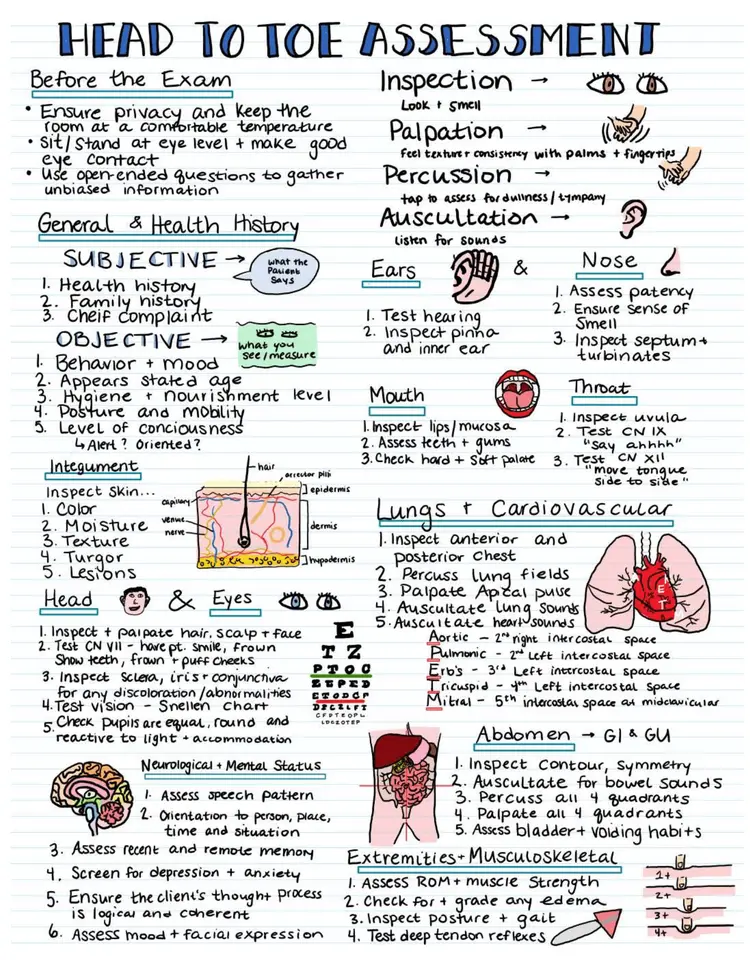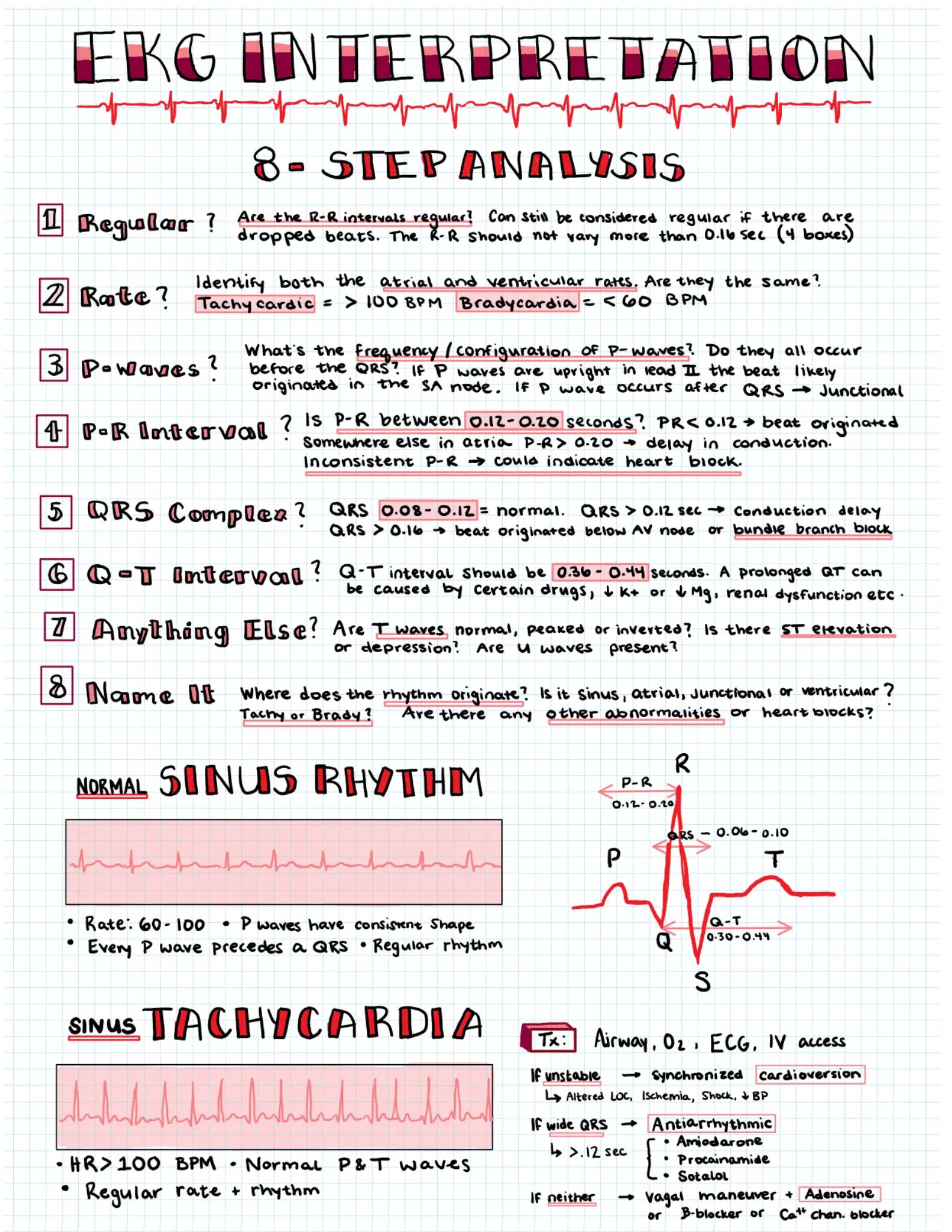
What started as a hobby for many students during the pandemic has grown into a profitable side-hustle. Here’s how some gifted note-takers turned creators are making their study guides sell.
Chelsea Reinhardt didn’t set out to make a living from nursing study guides. Initially, she just had a lot of free time on her hands.
As a former nursing student herself, she understood how difficult it could be to grasp concepts just by reading textbooks. So while working as a tutor for nursing students, she would often spend her downtime making condensed, highly visual course notes on her tablet. “While I had time between helping students, I would tweak my notes to make them a little more aesthetically pleasing, and I got pretty good at it,” she says. Before long, her students started noticing, and when some of them offered to buy copies of her notes, she thought she might be onto something.
“I have no background in design or art,” she says, “I’m a very scientific person. But I just knew how to organize content in a way that made sense visually.” Perhaps it was her scientific side then that prompted her to run an experiment one day: “I decided to just see what would happen if I posted some of my notes on Etsy.”
So she did, and the results spoke for themselves. “Within a year, I was making more money from my Etsy shop than I was at my part-time job,” she says. Her shop has been so successful, in fact, that Chelsea’s fiancée recently quit her job to help run the admin side of the business, processing orders and managing customer emails.
Today, CeceStudyGuides has sold over 27,500 guides on more than 50 nursing-related topics, from respiratory disorders to EKG essentials. And it’s not just Chelsea who’s found success in the niche student note market. A cottage industry of study guides, slideshow explainers, and curated notes has taken off online in the last few years.
Part of this surge in specialized notes and study guides can be tied directly to the rise of online marketplaces like Etsy, which offer an easy, agile way for people to sell their own content online in a digital format. But Etsy’s been around for a while now, and it wasn’t until the cultural shift towards remote learning in 2020 that this industry truly took off.
It seems that, for this subsection of the creator economy, the timing couldn’t be better. More projects that would have been side-hustles before are now viable career options. Here, we hear from some of the big players in this space about how they got their start, how they plan to grow their businesses, and more.
A cottage industry of study guides, slideshow explainers, and curated notes has taken off online in the last few years.
Accelerated by online learning, sustained by student need
Although Chelsea’s been running her shop successfully since 2018, she noticed that sales really started to spike in March and April of 2020. The increased appetite for visual resources as students were adjusting to at-home learning made sense. As Chelsea tells it, “Nursing isn’t something you can learn easily from home, and people were really struggling,” she says. “Without as much clinical time and in-person learning, it was just a lot of sitting on Zoom and trying to read through a textbook, which is overwhelming.”
Chelsea’s guides were a great antidote to that overwhelm and monotony; they stood out for their visual appeal as well as their straightforward simplicity. Being able to bridge that gap for students gave Chelsea a renewed sense of passion for the study guides she was providing. “I remember how hard nursing school was, so to be able to make students’ lives easier is really important to me,” says Chelsea. But even as students have been transitioning back to in-person learning, demand hasn’t slowed.
In fact, it’s stayed as strong as ever. “I think my guides help people feel less stressed about having to spend so much time reading their textbooks,” says Chelsea. That’s a benefit that students will always find value in, and it’s a nugget of truth that Chelsea’s used to keep up her truly prolific amount of output.
Chelsea’s done such a good job of creating student resources, in fact, that she’s even been approached by educators asking if they can use her guides as a class textbook. And while she’s not sure what the future holds, she knows there’s no shortage of subject matter she could improve with the CeceStudyGuide treatment. “When I first started, I was doing custom orders on subjects people were asking for help with,” she says, “But as my portfolio grew, I was just going through textbooks and finding the holes, seeing what could be explained better.”
This strategy served her well, and it’s what continues to inform her work. “I’m planning to branch out to pre-nursing course notes soon, like anatomy and physiology, but eventually I’d like to teach classes on how students can make better notes themselves.” If nothing else, Chelsea’s success has proven that there’s an appetite for resources like this that’s only going up—and spreading to other subject areas, as well.
Subject expertise is an advantage, but not essential
Jessie’s story, like Chelsea’s, shows that impressive alchemy can take place when a great eye for organization meets a passion for a specific subject matter. But other sellers are catching on that there’s also value in setting up templates that let people fill in that second part of the equation themselves.
Erika Grimaldi of WildberryPlanner got her start this way. Today, she sells digital notebook templates that allow students to choose from a number of formats, depending on the subject matter and the student’s specific needs.
Unlike Jessie and Chelsea, Erika’s background is rooted in design, and she uses that skill set to inform the resources she creates. “When I got started, there were similar resources out there, but they were all pink, and the design quality was often lacking.” She focused on creating unique, retro-inspired templates that offered flexibility and allowed for information hierarchy.
The key to Erika’s success has been adaptability. Students can use her notebooks for any subject, and they can also include hyperlinks to further online resources and separate them out by subject. These features make each template repeatable and infinitely useful, empowering students to harness their own expertise.
The market for organization isn’t going anywhere
There’s a lot to learn from the star sellers of the online note-taking community. Passion and a knack for organization seem to serve as the universal spark that helped them get started, but it’s a love of learning that has kept the fire going. Those creators who are willing to put the time into Instagram and TikTok advertising are also finding new audiences every day who are looking for learning hacks.
As students return to in-person learning, it doesn’t look like online note sales will suffer, either. Whether creators set up an Etsy shop or use extensions like Shopify or Dropbox Shop to sell, there’s no shortage of avenues these creators can take to reach audiences and sell their content. As it’s been said often over the last few years, you can’t go back through a one-way door. The online creator economy is thriving, and subsections like this one are proof that it’s finding ever more ways to grow.
















.png/_jcr_content/renditions/hero_square%20(1).webp)

.png/_jcr_content/renditions/hero_wide%20(1).webp)



.png/_jcr_content/renditions/hero_square%20(3).webp)
.png/_jcr_content/renditions/blog%20(1).webp)

.png/_jcr_content/renditions/hero%20(1).webp)
.png/_jcr_content/renditions/hero_wide%20(1).webp)















































.png/_jcr_content/renditions/1080x1080%20(1).webp)









.gif)







































































.png)
.png)
.png)
.jpg)
.jpg)













































































































































































































































































































































































